-
Competition features and documentaries
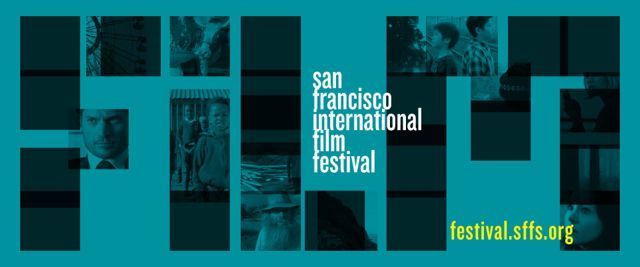
COMPETITION FILMS:
Official Selections 2012 New Directors Prize (Narrative Feature) Competition
Official Selections 2012 New Directors Prize (Narrative Feature) Competition
Back to Stay, Milagros Mumenthaler, Argentina 2011, U.S. Premiere
Buenos Aires at the end of summer. Marina, Sofia and Violeta are alone in the family home after their grandmother, who had brought them up, has died. This strange situation will affect their interactions with one another and with the world.
Choked, Jong-hyn Kim, South Korea 2011
In a recession-battered Seoul, a young man in the dodgy relocation business must deal with loan sharks and aggrieved parties owed large sums by his vanished entrepreneur mother. Director Kim Joong-hyun gradually turns up the heat and watches his characters boil in this intelligent and nuanced feature debut.
Found Memories, Júlia Murat, Brazil 2011
A young photographer drifts into the tiny Brazilian village of Jotuomba, charming the elders with her camera and learning the fine art of baking bread in this disarming meditation on memory, aging and letting go of the past.
Land of Oblivion, Michale Boganim, France/Ukraine 2011
This compelling debut feature tallies up the fragile human cost of one of the first truly global disasters, the cataclysm at the nuclear power facility at Chernobyl. Ukrainian Bond girl Olga Kurylenko plays emotionally damaged Anya, one of many unanchored survivors whose memories and ambitions are impacted by the strangely magnetic pull of a desolate hometown.
Last Winter, John Shank, Belgium 2011
A young farmer in central France tries to sustain his spiritual connection to the land amid the crushing pressures of modern agriculture in this elegiac drama. Vincent Rottiers is the taciturn Johann, who goes it alone in the landscape he loves, a terrain captured in shimmering cinematography.
Mosquita y Mari, Aurora Guerrero, USA 2011
Set in Huntington Park, near downtown Los Angeles, this earnest and beguiling coming-of-age tale follows two Chicana teens in the midst of the delicate dance of self-discovery and sexual awakening as they explore a new friendship and young love.
Neighboring Sounds, Kleber Mendonça Filho, Brazil 2012
This magnificently sculpted story about life on an upscale street in the bustling city of Recife encompasses an entire city block’s worth of characters, incidents and encounters. The totality becomes symphonic in its structure and power.
OK, Enough, Goodbye., Rania Attieh, Daniel Garcia, Lebanon 2010
A forty-something Lebanese pastry shop owner who looks like an escapee from a film by Judd Apatow and still lives with his mother is the unlikely protagonist of this marvelously crafted deadpan comedy. After his mother skips town, he searches cluelessly for various maternal substitutes.
Policeman, Nadav Lapid, Israel 2011
This fascinating journey into Israel’s changing political landscapes doubles as a formally puzzle-like narrative. Story lines involving a counter-terrorism police unit and class-war guerillas merge into a telling picture of a long-embattled region.
17 Girls, Delphine Coulin, Muriel Coulin, France 2011
A young girl’s decision not to terminate an accidental pregnancy sets off something like an airborne outbreak of teen reproduction, transmitted via loneliness and peer pressure, in this startling debut feature based on real-life events.
Valley of Saints, Musa Syeed, India 2012
Using Kashmir’s picturesque Dal Lake as its backdrop and underpinned by the political unrest in the region, this heartfelt drama explores the relationship between two best friends and the female researcher, studying environmental degradation, who threatens to distract them from their dreams of escape.
In addition to these 11 first features in competition, the New Directors section of SFIFF55 includes 19 out-of-competition films, which will be announced at the Festival’s press conference Tuesday, March 27.
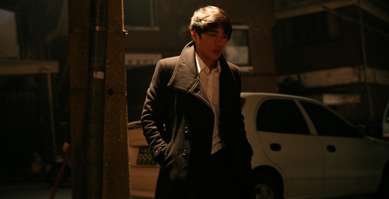
EOM TAE-GU IN CHOKED
Official Selections 2012 Golden Gate Awards Documentary Feature Competition
Golden Slumbers, Davy Chou, Cambodia 2011
This exceptional documentary summons the spirits of Cambodian cinema’s golden age, which ended during the Khmer Rouge’s reign of terror between 1975 and 1979. Blending interviews with surviving filmmakers, classic songs and poetic examinations of former movie palaces, Golden Slumbers is a testament to the captivating power of art in the face of tragedy.
In My Mother’s Arms, Atia Jabarah al-Daradji, Mohamed Jabarah al-Daradji, Iraq 2011
In violence-ridden Baghdad, one determined man tries to create a safe haven: an independent orphanage with no government support, where 32 Iraqi boys live, eat, play, sleep and go to school together. It is a fragile ecosystem shielding them from a life of suffering and extreme danger.
Informant, Jamie Meltzer, USA 2012, World Premiere
Brandon Darby, liberal activist turned FBI informant turned FOX news commentator and Tea Party darling, tells his side of the story.
It’s the Earth Not the Moon, Gonçalo Tocha, Portugal 2011
Filming on the remote Azores island of Corvo, director Gonçalo Tocha aims “to be everywhere at the same time and not miss a thing.” The result is a wonderfully poetic take on the anthropological documentary, the travel essay and the armchair adventure, made with almost naďve sincerity.
The Law in These Parts, Ra’anan Alexandrowicz, Israel 2011
This film, winner of the Sundance 2012 World Documentary prize, offers a rare insider’s view of the logic, structure and moral cost of Israel’s parallel military legal system that governs Palestinians under occupation. Interviews with the men who created and uphold these laws, artfully juxtaposed with archival footage, call into question concepts of justice and rule-of-law.
Meanwhile in Mamelodi, Benjamin Kahlmeyer, Germany 2011, U.S. Premiere
Set against the raucous backdrop of the 2010 World Cup, this beautifully crafted portrait of a place and a family features stunning cinematography and a lively score, as the Mtswenis’ day-to-day struggles and victories echo the promise of a new South Africa.
Off Label, Donal Mosher, Michael Palmieri, USA 2011
An alternatively tragic and bleakly comic road trip through the methods and madness of pharmaceuticals in our culture. Setting personal storytelling against archival and industrial footage, it examines the medicated margins of American life, from the testing, marketing and consumption of pharmaceuticals to the alienation, perseverance and spiritual striving of individuals living in a society that pathologizes our desires for health, happiness and even our sense of identity for profit.
Patience (After Sebald), Grant Gee, England 2012
This moving tour through the landscape of W.G. Sebald’s genre-bending novel, The Rings of Saturn, presents a multilayered, many-voiced homage to his discursive, elegiac and perfectly illusion-free style by poets, mapmakers, novelists and acquaintances—admirers haunted and inspired by the voice of the German writer, who died in 2001.
The Source, Maria Demopolous, Jodi Wille, USA 2012
An exploration of the controversial Source Family, a ’70s Southern California experiment in communal living whose eccentric leader, Father Yod, championed Eastern mysticism, healthy living and sexual liberation. Using archival footage and interviews with former members, the documentary chronicles the Family from inception through implosion, examining its lasting impressions on pop culture.
Step Up to the Plate, Paul Lacoste, France 2011
Hawkeyed master chef Michel Bras is ready to hand the keys to his Michelin-recognized restaurant in rural southwestern France to his talented son. A sublime, contemplative study of artistry, family and tradition calibrated to the turning of the seasons, this lovely documentary is about much more than food.
The Waiting Room, Peter Nicks, USA 2012
Dire situations are often illuminated by extraordinary acts of compassion in this intimate and intense day-in-the-life documentary portrait of the patients, doctors, nurses and social workers at Oakland’s Highland Hospital—Alameda County’s busiest medical center for trauma cases, the uninsured and indigent.
Winter Nomads, Manuel von Stürler, Switzerland 2012, North American Premiere
800 sheep, three donkeys, and several dogs are led by two shepherds through Swiss fields and suburbs in a film that combines its beautifully photographed images with a keen ear for sound to situate this vanishing profession and lifestyle within a changing environment.
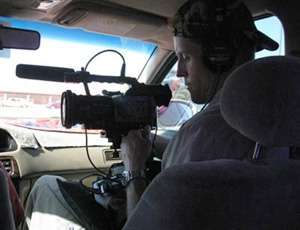
JOHN KANE EDITED INFORMANT FOR JAMIE MELTZER
Last edited by Chris Knipp; 07-23-2014 at 10:13 PM.
-
Step Up to the Plate (Paul Lacoste 2011)
PAUL LACOSTE: STEP UP TO THE PLATE (2011)

SEBASTIEN AND MICHEL BRAS IN STEP UP TO THE PLATE
Preview
Tradition and creativity in French cuisine
This translation of its title is a nice pun that you couldn't make in French. The original title of this austere, impressive documentary about tradition and creativity in a French regional restaurant, which opened in Paris March 14, 2012, is Entre Les Bras - La cuisine en héritage, but it's a pun too, because "entre les bras" is like "within reach" or "pass off," but the family of great chefs, father Michel and son Sébastien, is Bras, so the action here is all "among the Bras." The film begins in 2009, when Michel Bras decides to pass on the reins to Sébastien. Michel is a famous French chef. His restaurant in Laguiole, deep in the semi-mountainous Aubrac region of the Hautes-Pyranées in southwest France, has won many awards including Michelin three stars, one of 106 in the world, and 26 in France, to have this honor. The film doesn't tell us any of this; there is no narration or fuss about fame. In the second scene we see Michel create Le Gargouillou, his most famous dish, which is like a painting, revealing his mixture of freshness and complexity, and his incredible knowledge of the local flora and herbs. Later Sébastien will create his own dish, and his father will critique it, multiple times. At the end, Sébastien will cast it aside, and break it down, and we see him, having officially more or less taken over the mantle from his father, presenting three dishes in sequence at the Palais Royal in Paris. They run from savory to sweet. It's like a final exam, that he passes summa cum laude.
The film, which is organized by a run through the four seasons from spring to winter and back to spring, is austere, handheld, mostly without music, fly-on-the-wall, or often fly-in-the-face, because it closeups on the two men. They are both fit, runners. No smoking or pot belly for them. They are rather alike, both in their lean, craggy faces and in their agelessness. Michel has all his hair, and it's only partly gray. Sébastien is no longer young, but of indeterminate age. Later we meet their father and mother, who ran a restaurant too; Michel began following around in the kitchen, as did Sébastien. Their grandfather was a farmer in the region. The farm is still active. Alban, Sébastien's young son, already works in the kitchen as he father and grandfather did. So we begin to realize why some of the world's greatest restaurants are in far-off parts of France: because their proprietors are deeply rooted in the regions and their cuisine is a flower of the land. Step Up to the Plate could be called Handing Off the Baton. Michel is still running, literally. He is not leaving. He continues to work, closely involved in selecting food at the market each week. "If I stop doing that," he says, "I will be dead." "Their carelessness in making selections," he begins, referring vaguely to his successors, and then he stops and seems to begin to cry.
http://www.filmleaf.net/showthread.p...-Festival-2012
Kabuki
Fri April 27, 6:00 pm
Sat April 28, 3:45 pm
PFA
Sun, April 29, 1:00 pm
This is a preview. My full review will be available here after the film's US release.
.
Last edited by Chris Knipp; 04-16-2013 at 06:16 PM.
-
Kim Jong-hyun: Choked (2012)
KIM JOONG-HYUN: CHOKED (2012)

EON TAE-GU IN CHOKED
Money money money
Somehow young Korean director Kim Joong-hyun's promising first feature Choked (Kashi) reminds me of early Visconti, though his Asian Alain Delon, Gwon Yun-ho (Eom Tae-gu), with his far-away look and cheekbones for days, isn't a dirt-poor immigrant in Milan but someone trapped at the bottom of his country's economic boom, stuck with his mother's bad debts, an evil job, and a condescending, status-conscious fiancee. Yun-ho (Eom) lives with his ditsy mother Park Hui-su (Gil Hae-yeon), whose diet supplement pyramid scheme involves something she claims made Nancy Reagon start menstruating again. After the delivery of many cartons of this stuff, mom mysteriously disappears in the night, and Youn-hoo is stuck with her debts. The chief investor is another foolish woman, Lee Seo-hui (Park Se-jin), to whom she owes 30 million won ($25,000), and we spend a lot of time following her around, while Yun-ho works for Dobang Construction, his job to help persuade the occupants of a housing block to move out.
Yun-ho's fiancee Se-gyeong (Yun Chae-yeong) keeps bugging Yun-ho to introduce her to his mother. Needless to say, he can't explain why he can't do this. She also wants them to take a nice apartment. The one he lives in, owned by his aunt's husband, is a dump. Seo-hui is bugging him to pay her what his mom owes. He's also pursued by a loan shark who wants him to sign his life or his body away. Seo-hui is struggling and illegal herself, selling designer knockoffs out of her minivan. She threatens to sue, and presses charges against Hui-su, who gets put in jail for a while when she's found. Yun-ho tries to get a big loan through a bank officer friend. Eventually his efforts to pressure housing block residents for the construction company lead to violent retaliation, just after his mother is released and returns home.
Wherever you turn in this story, it's all about money. Money brings status (which Yun-ho's aunt is obsessed with like his fiancee) and his supervisor brags that now people can be removed from their housing by payoffs rather than physical force. Seo-hui is divorced, and has to appeal to her ex-husband to put up money to bail her out when she gets picked up by the cops for a violation. He has remarried and her little daughter has switched allegiance to her step-mom, but Seo-hui tries to buy her affection by offering her an expensive video game. Yun-ho tries to hold onto the materialistic Se-gyeong by dressing nicely and showing her nice Seoul apartments. When he shows her, more realistically, a small one, she dumps him.
The film has limited tech credits but, shot by dp Lee Jin-Keun with a red camera, the images are clear and sharp, and the action is mobile, constantly shifting from Yun-ho to Seo-hui and from one of their scenes to another. As Yun-ho, Eom Tae-gu is both neutral and complex. At first his opacity seems a sign of strength, and he can lash out on occasion, and stands up to the loan shark, but the three demanding, crazy women wear him down, and when his mother returns and he's sitting at the kitchen table with her, he momentarily seems her little boy again. But the film is as much about Seo-hui, as emerges clearly when we begin to feel Yun-ho's passivity. A particularly strong and well placed moment comes late in the film when Seo-hui and Yun-ho encounter each other on some steps and he sits smoking and staring into space after she has been cruelly rejected by her ex-husband and sits munching on some of the pastries from his bakery. Choked (whose Korean title actually means "Thorns") is a character-driven drama, and all the main actors are good. The important thing is that Park Se-jin and Gil Hae-jeon as the impoverished divorcee and the mother, never seem pathetic, though the rejected, compromised, and bilked divorcee Seo-hui is certainly struggling. Director Kim avoids that by conceiving them as kooky and trying to reshape the world to fit their own fantasies. Hui-su, once out of confinement, plans to become a truck driver and even gets Seo-hui to give her a lesson on the way home. But she doesn't even know how to shift gears.
Kim doesn't quite know how to end either, but that works because there's not meant to be any escape from Yun-ho's personal trap of the bullying, snobbism, and materialism of modern Korea that Kim delineates here. One can argue, as Derek Elley does in his Film Business Asia Pusan review, that Yun-ho is too passive and the three women show too little development, making the second half repetitious, but Kim still seems to have an original point of view and his script plays out with determination and restraint, if not with the warmth of the Italians.
Choked debuted at Pusan in January 2012 and was shown in March at Miami. It was reviewed here as part of the San Francisco International Film Festival, where it will be shown as follows:
KABUKI
Sat Apr. 21, 1:30 pm
Sat. Apr. 28, 6:00 pm
Tue. May 1, 9:00 pm.
Last edited by Chris Knipp; 04-06-2012 at 11:00 PM.
-
Richard Linklater: Bernie (2012)
RICHARD LINKLATER: BERNIE (2011)
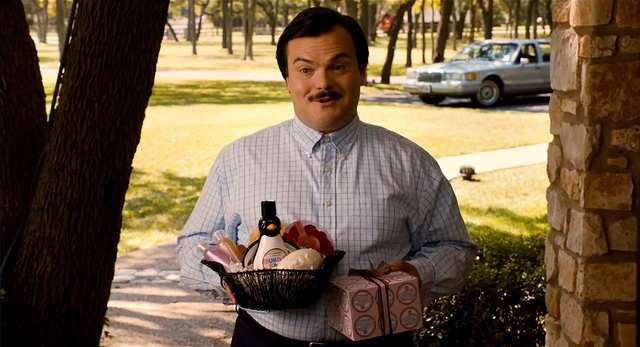
JACK BLACK IN BERNIE
The nicest murderer in East Texas
In the town of Carthage in East Texas, not too long ago, there was an assistant funeral director called Bernie Tiede, pronounced "Teedy" -- like "tedium" without the "um." He sang, played the organ in church, directed local theatricals, including The Music Man. He taught classes to aspiring morticians. He was wonderful with widows. He was nice to everybody and all the town of Carthage liked him, though he had little use for ladies of his own age. In fact, as some acknowledged, he was a little "light in the loafers," in short, closeted gay. Among the widows whom he befriended was Marjorie Nugent, wife of a recently deceased and very mean and rich oil man, who turned out to be even meaner than her husband. Marjorie alienated all her relatives and some of them sued her. She was nasty to everyone who worked for her. But Bernie was so nice to her she began going around with him, taking him on trips, and eventually making him reduce his work load at the funeral home and become her full-time companion, house manager, jack of all trades. Her pampered slave, and sole beneficiary.
And then she became so bossy and controlling and mean that Bernie, nice though he was, couldn't stand it any more and without intending to, quite, he killed her, shot her four times in the back, and popped her body in the freezer, to await a proper burial. And then he began spending more and more of her money, but always to do kindnesses around the town -- until, after nine months in the freezer, Marjorie's disappearance became too suspicious, and Bernie got caught. This is the true story Texas native Richard Linklater, collaborating with Skip Hollandsworth, the author of an article about Bernie Tiede in the Texas Montly, has endeavorred to present on film, making use of the excellent services of Jack Black as Bernie, in an unusual semi-serious role, Shirley MacLaine as the widow, and Matthew McCaughnhey as the DA who brings Bernie to justice, against the wishes of the Carthagenians, who hated the widow and loved Bernie and declared that they wanted him to go free.
Linklater tells his story partly as a lighthearted true-crime story, somewhat like a tamer, more claustrophobic verson of what Glenn Ficarra and John Requa did in I Love You Philip Morris, and partly as a choral Christopher Guest-style mocumentary, because there is much focus on the townspeople (played by twangy Texas TV actors) extolling the virtues of Bernie and telling his story. It's been commented with some justice that the mocumentary bits get in the way of Bernie's own tale. If you can forget that this is Jack Black, his scenes tell the story well enough. Though he plays it a bit too fey at times (particularly in the swishy walk) he delivers a nicely modulated performance, half droll, half real. The only thing he cannot capture, because he is too good a comic actor, is the banality of goodness. But Linklater evidently was wedded to the townsfolks' flavorful testimony, and let it flow more than necessary. It is what gets most of the film's laughs, and it's funny, and loaded with telling jokes about Texas Linklater must have been storing up all his life. One speaker in particular gets crude but irresistible laughs by deriding every part of the state but East Texas, and then describing the nearby district the trial's moved to (so the prosecution will have a chance) as nothing but trailer trash retards.
All this is done with polish. MacLaine is far more restrained than she has been in the past. The character she is playing is extreme enough not to need puffing up. Similarly, Bernie warns his mortuary pupils not to think they make a corpse look more alive by using too much makeup. Matthew McConaughey is as different from his usual roles as Black is in his, as Danny Buck Davidson, the zealous DA, who wants justice done but more than anything wants to get reelected.
But what are we to make of this movie? It presents us with a moral dilemma. Bernie gets a severe sentence. Should he not have? Is this kind of tongue in cheek treatment a fair way to deal with a real crime story? Jack Black visited the real Bernie in prison and has said, “There’s precedent for films in the past that have helped people get out, but you worry at the time you’re making the film: ‘Wait, if we don’t present the film properly, will it actually hurt his chances of getting out?’” Indeed. That's what I was wondering. And I was also wondering if a "good" murderer is even interesting. We like evil. We don't mind if it's droll, like, say, the wondferful string of murders executed by the Victorian villain Louis Mazzini (Dennis Price) in Kind Hearts and Coronet, who knocks off eight relatives, all played by Alec Guinness, in order to gain the title of first Duke of D'Ascoyne. Mazzini's certainly wicked, but his crimes are great fun, because he's self-serving in such a dashing, Macchiavellian way. One wishes Bernie had taken pleasure in doing away with the insufferable Marjorie Nugent -- or at least, as various townspeople opine, he had done the job right, with care and premeditation, so he'd gotten away with it.
Linklater and his coauthor tell their true story in their own homely, humorous Texas style. It's very effective in its way. And it's more or less true, and doubtless some will love it. But it's curiously unsatisfying and too uncritical and lacking in nuance in its treatment of Bernie and his relationship with Marjorie.
Bernie was shown in June 2011 at the LA Film Festival, and also at Rio and London. It had a Texas premiere at SXSW in Austin March 14, 2012, and debuted in NYC as part of Tribeca April 23. Screened for this review in San Francisco, it was included in the San Francisco International Film Festival, where it was shown April 21. It goes into limited US release April 27, and expands May 4.
Last edited by Chris Knipp; 04-27-2012 at 01:56 PM.
-
Cristián Jiménez: Bonsái (2011)
CRISTIÁN JIMÉNEZ: BONSÁI (20110
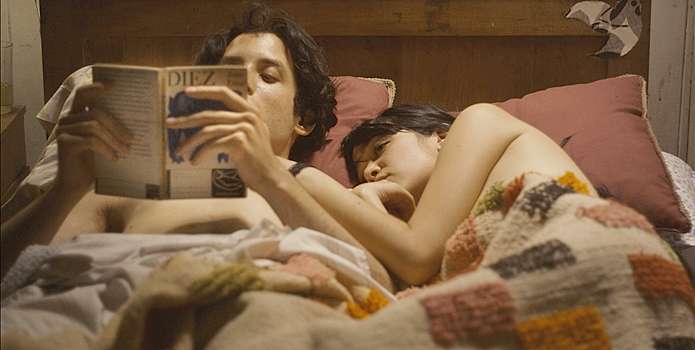
DIEGO NOGUERA AND NATHALIA GALGANI IN BONSÁI
Lies, literature, loves
We must consider adding to Alicia Scherson (of the lovely Play, SFIFF 2006) and Pablo Larrain (of the superbly creepy Tony Manero and Post Morten, NYFF 2008 and 2010) the name of another younger Chilean filmmaker, Cristián Jiménez. He has chosen for this, his second film, Alejandro Zambra's much-admired eponymous novella (and debut). It begins this way: "In the end she dies and he remains alone, although in truth he was alone some years before her death, Emilia's death. Let's say that she is called or was called Emilia and that he is called, was called, and continues to be called Julio. Julio and Emilia. In the end Emilia dies and Julio does not die. The rest is literature:" Bold opening for a movie to begin with a total "spoiler." In fact this film, too, is literature. It concerns a young man who writes a novel about himself and Emilia pretending to his girlfriend at the time -- it's eight years later -- that it's the (handwritten) manuscript of a well known writer that's he's transcribing Julio (Diego Noguera) has pretended to Emilia that he's read Proust, whom she says she's read. Perhaps she's lying too. Note that and love-making and live punk rock music and symbolic plants, and you've about got the basics about a somewhat vague young man learning to love and to write.
The film oscillates in neatly organized sections between Julio's college days studying literature in Valdivia, southern Chile, when he was in love with Emilia (Nathalia Galgani), and that eight years later in Santiago, when he's involved, less romantically, with Blanca (Trinidad González). This is when he pretends to be working for the writer, Gazmuri (Hugo Medina), but is really filling up the four blue notebooks himself.
Diego Noguera plays Julio with confident confusion and poetical blankness. He's a little bit insufferable but he's at the age when being stupid is forgivable. Emilia doesn't necessarily take him very seriously, but after their meeting in the library it's not long before they're in bed every night and, after sex, they read aloud to each other a few pages of a book. If that appeals to you, this lighthearted, bittersweet tale is a movie for you to watch. It's distinctly a young man's film, but it may appeal to young women seeking to understand what makes young men tick.
Julio raises his hand in class to show he's read Proust, which he hasn't, then gets it from the library and goes to the beach, where he falls asleep with the book on his stomach. He wakes up sunburned with a white rectangle where Swan's Way in Spanish was sitting. This defines him and the novella's humorous, slightly sardonic picture of him. The earlier Julio is a student and a reader; the later one is bespectacled, bearded and longer-haired, living marginally, hoping to become a writer, which leads him to take the typing job for Gazmuri, who quickly fires him when he finds someone in his publisher's office who'll do it more cheaply. His sex buddy eight years later is Blanca, who lives in the little apartment across the hall from him. As he has lied to Emilia that he'd read Proust, he lies to Blanca about the fact that Gazmuri has fired him and the writing in the notebooks is his own. Does she suspect? Her comments suggest that she may, and this perhaps is the sweet, indirect way that Blanca and Julio communicate. But she can't be honest with him either and doesn't tell him she's off to Madrid to get a master's degree till the day she's out the door. ("The boxes were suspicious," Julio remarks. "Yes, a suspicious kind of cardboard," she quips.)
What do we suspect? That the flashback sections may be lies too, that they're passages from Julio's fake Gazmuri MS that pretend to be his love affair with Emilia, but are a variation.
There is a Nouvelle Vague playfulness about this tale that makes one wish Jiménez had added more quirky touches like the arrow over Julio's head when he's off in a street scene, so we can spot him on a bike. Witty and sardonic though the story is, one wishes Jiméniz had dared to be a bit more fresh and witty in the cinematic retelling of it; but he may have been deterred by the source novella's near-classic status.
Jiménez's film (and it's shot on film) has a nice, slightly grungy look (especially shots on the roof trimming and arranging his bonsai tree -- part of the somewhat cutesy plant-bonsai theme). I'm afraid I was a little bit underwhelmed. The film's offbeat hipness and New Wave-ishness may have helped get its inclusion in Cannes' Un Certain Regard last year. It was also at Toronto, and other festivals, and Strand has picked it up for US release. In the meantime it was included in the San Francisco International Film Festival April 20, 22 and 24, 2012. It opened theatrically in Miami (at whose festival it won the popular jury prize) May 18, 2012.
Last edited by Chris Knipp; 03-19-2017 at 11:12 PM.
-
Peter Nicks: The Waiting Room (2012)
PETER NICKS: THE WAITING ROOM (2012)
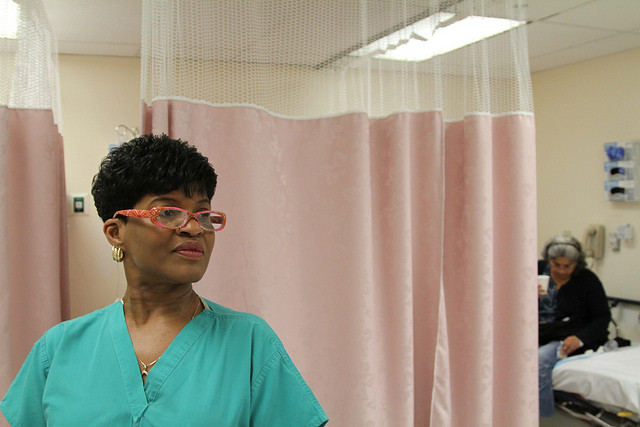
CYNTHIA JOHNSON IS FAR MORE THAN JUST AN ADMITTING CLERK IN THE WAITING ROOM
Life and death and the long wait in a big city emergency room
The title, The Waiting Room, is a little misleading. This documentary was made in the large anteroom to a big city ER, Highland Hospital, in Oakland, California, a place seething with suffering and need. It was also made in the hospital rooms and trauma units inside, where the people are waiting to be admitted. The film only lasts 81 minutes, but it's an emotionally exhausting watch, and it feels like six hours, as it should: the staff work long days and the patients often wait all day to be seen. The Emmy Award winning Bay Area director Peter Nicks' film is simple but selfless and tireless. The result is a tough experience and a vital one. The Waiting Room is an TV documentary film and social media project. The latter designation pertains to its use as part of "The Storytelling Project," "a "community engagement initiative that aims to improve the patient experience," and this comprises much information and oral testimony that goes beyond the film's contents. In the film, which has no narration, patients and some staff in voiceover talk about what was going on when we watch the close ambulatory coverage here of many who came into or worked in the Highland ER, the busiest in Alameda County during a 24-hour period.
This is first of all a raw slice of life, an intense look at human experience. The film depicts social and economic problems, but as Nicks writes, it primarily shows "how our common vulnerability to illness binds us together as humans." We see a young girl with a serious strep throat whose mother is afraid it's a cyst. She and her estranged husband have lost a small child two years ago, and the father is terrified just to be in a hospital again. An aging carpet layer who has spinal bone spurs that are giving him such intense pain he can't sleep, but he must go on working to pay his mortgage. He has nothing in the bank and $80 in his pocket. A man who needs dialysis but who hates the process so much he would rather (expletive) die. A drug addict who comes in twice a month, but is really okay; he's just overtaxed his damaged lungs. Another man who has a bullet in his leg that may be causing delayed damage. A forty-ish man who's recently had a stroke, and keeps falling down. A fifteen-year-old in a trauma case who can't be saved and apparently dies of a bullet wound. (There are so many around him trying to save him it's hard to see.) We also repeatedly observe the efforts of the staff to get people in need of the most care to doctors or into beds; but there are not enough. Everyone has a story, but there is one story that emerges from all of them. We know this, but here it is in knowing, specific terms. The American medical system cannot and does not adequately provide for the poor, the out of work, for those who cannot pay for medical insurance and do not have Medicaid or Medicare. If you're American living in America and you're not rich, this could some day be you.
Or course anyone in a serious accident -- or a gun battle -- has to come here, and this is the best place to treat such traumatic injuries. But many patients are here because they could not afford the regular care of a physician or clinic that could much more economically detect illness early or provide treatment and medication for chronic problems. Most of us know this too: that ER's are overburdened because so many go to them as their only source of medical care. They even go there for dental problems, because they have not been able to pay for a dentist, so they have an abscess or an infected jaw, that, with regular dental care, would hardly ever happen. They are diabetic, and they have run out of insulin. Or they were not referred for surgery through the proper channels. A young man without enough money for medical insurance has gone through the private Kaiser system to get urgent surgery for a testicular tumor. Somehow he got all the tests and was set up for surgery before the staff realized he was not a member of Kaiser and abruptly cancelled his surgery the day before it was scheduled. Luckily, he has all the data on a disc, and eventually seems set up for surgery again via public medicine before the film is over. But in many of these cases, from the girl with the strep throat to the twenty-something with the tumor, the patients' problem has worsened because due to lack of funds or insurance they didn't have access to regular outpatient care. This is the big waste of the privatized American system. But the film also is a minute-to-minute picture of America's economic crisis, because the waiting room is full not just of the indigent and the chronically poor but of the newly poor and newly unemployed, who have only recently lost health insurance or the ability to pay for it.
The Waiting Room doesn't make these generalizations. It provides a lot of live dialogue, along with occasional voiceovers from patients and staff. Besides providing pictures of many individual cases, Nicks gives us a good picture of the problems of the ER -- all the ways it isn't able to get people through fast enough, because it's overloaded -- and the staff's best efforts to deal with them. He need not generalize. This is the best kind of documentary: one that speaks through very specific and very human details. Life in the raw. An essential companion piece to Michael Moore's Sicko. Nicks does not point fingers. The hospital staff members we see, the most prominent ones, are models of compassion and efficiency -- not an easy or obvious combination, by the way.
The Waiting Room, which is Nicks' feature documentary debut, obviously benefits from full access to the ER and most of the people in it. It features some time-lapse photography from above to show the constant ebb and flow of waiting room occupants. It clearly is well served by the editing staff headed by Lawrence Leres, aided by David O. Weissman and Michael Godier. Nicks is the chief photographer. The film has been likened to Frederick Wiseman's Hospital, but it seems warmer and more "character driven" (Nicks' word) than Wiseman's work. There is a Waiting Room Project Flickr photostream of the film, richly supplied with stills, that tells us who the compassionate lady is who logs in most of the patients during the time of the film. She was Certified Nurse Assistant Cynthia Johnson, and the chief physician on view is Resident Dr. Doug White. The patients we get to meet are also identified. The film was shown at the CUNY School of Public Health in November 2011, and at the documentary True/False Film Fest in Columbia, Missouri in early March 2012. The film is scheduled to air on PBS' Independent Lens in the Fall of 2012. It is a contender for the Best Documentary Feature Prize at the San Francisco International Film Festival, where it will be shown at the following times and places:
PFA
Sat, Apr 21, 2012 3:50 pm
Kabuki
Mon, Apr 30 1:00 pm
Tue, May 1 6:30 pm
The film's website provides access to the Storytelling Project side of the Highland ER effort.
Last edited by Chris Knipp; 07-23-2014 at 10:19 PM.
-
Milagros Mumenthaler: Back to Stay (2011)
MILAGROS MUMENTHALER: BACK TO STAY (2011)
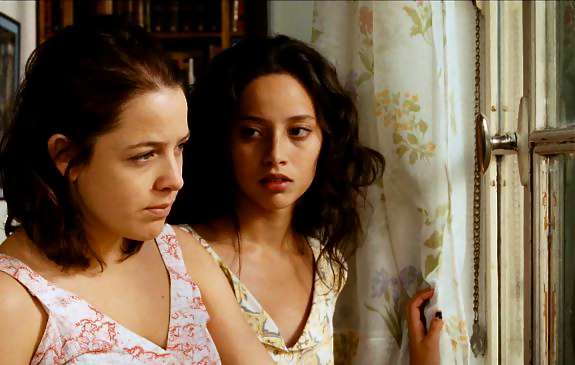
MARIA CANALE AND AILIN SALAS IN BACK TO STAY
Indolent grieving
From Argentina, this film is called Abrir puertas y ventanas in Spanish, "To Open Doors and Windows." And indeed the first time director, Milagros Mumenthaler, has a fixation on these two apertures: the camera is always catching a window or a door being gone through, opened, slammed. As has been remarked by others, it is the visuals that appeal in this slow-moving, delicate film. Less appealing and not deeply explored are the protagonists -- three sisters, though they don't resemble each other. Marina (Maria Canale), a college student and the most responsible one of the three, doesn't want anything to change. The irritable and uncooperative Sofia (Martina Juncadella) is an obvious contrast, constantly changing outfits and rearranging or disposing of the decor. The listless Violeta (Ailin Salas) lies about scantily clad, most of the time too lazy even to get fully dressed. Something is off, but it takes a while to find out what -- their grandmother and guardian, a university professor, has recently died of a heart attack. Hanging around in their comfortable house and troubled by family secrets, the sisters appear to have few friends and no other family. Though Maria occasionally goes off to school, they all seem largely immobilized, it would seem as much by laziness, the heat, and boredom as by grief; or they may need to express grief and lack the energy to do so. They can't be bothered to go to a video shop and merely telephone to order a movie to be delivered -- "A comedy," "Something that's not Argentinean."
"Visuals are attractive," as Jay Weissberg of Variety wrote when the film debuted at Locarno, "and Martin Frias' gently gliding camera conveys some of the melancholy attached to the house and its inhabitants. How it circumscribes space, and the way individuals function within their own spaces, ultimately becomes more interesting here than any narrative development."
Narrative development takes a good while to get going, though eventually there is some. The process was a little too delicate for Weissberg, and it was pretty delicate for me. The script Mumenthaler has penned provides little initial movement, even psychological. Interactions between the sisters are minimal, and information is withheld. It's nearly a third of the way in before a phone conversation reveals the grandmother's death, and details about the house and inheritance are barely mentioned. The film toys with narrative possibilities -- the departure of one sister, the possibility that another was adopted -- but everything is kept a little mysterious. It's a way of working that may seem real or intriguing to some viewers, and merely careless or uninteresting to others.
The girls -- not unusual for teenagers, but these are twenty-somethings -- aren't much good at expressing their feelings to each other. In what is, for the lack of anything better, an emotional highlight, the three sit side by side, pressed close on a sofa, to listen to and sing along with the song "Back to Stay," Marina weeps while Sofia and Violeta look sad. This is as intimate and emotionally raw as they get.
Later there is a love interest that develops, news of a sort comes from the missing sister, and the two remaining ones seem reconciled to each other and to change. But these developments, while pleasing, may come a little late for some of us. Mumenthaler's almost fetishistic minimalism, and the not terribly resonant door-window motif, seem unpromising. But sometody likes it: Back to Stay won the Golden Leopard at Locarno, having had Cannes support for the writing, and was realized with Hubert Bals Fund support. Mumenthaler achieves a distinctly non-commercial, independent, stylish approach. But I would have to agree with Weissberg that this is a "self-conscious, ultimately slight debut." Mumenthaler seems not up to the caliber of such recently notable Argentinean directors as Fabian Bielinsky, Carlos Sorin, Lucrecia Martel, or Pablo Traperoo. But in her way she already shows a very sure touch, and time will tell.
Back to Stay/Abrir puertas y ventanas was also shown at Toronto, Vancouver, London, Rotterdam and Hong Kong, showing a festival reputation acquired already by the director. It was screened for this review as part of the 2012 San Francisco International Film Festival, where it is a New Directors Prize contender, and is having its North American debut. It's an Argentina-Netherlands-Switzerland co-production. It is scheduled to be shown as follows:
PFA
Sat, Apr 28, 2012 8:50 pm
Kabuki
Mon, Apr 30 4:00 pm
Wed, May 2 9:30 pm
Last edited by Chris Knipp; 04-14-2012 at 06:40 PM.
 Posting Permissions
Posting Permissions
- You may not post new threads
- You may not post replies
- You may not post attachments
- You may not edit your posts
-
Forum Rules







 Reply With Quote
Reply With Quote






Bookmarks